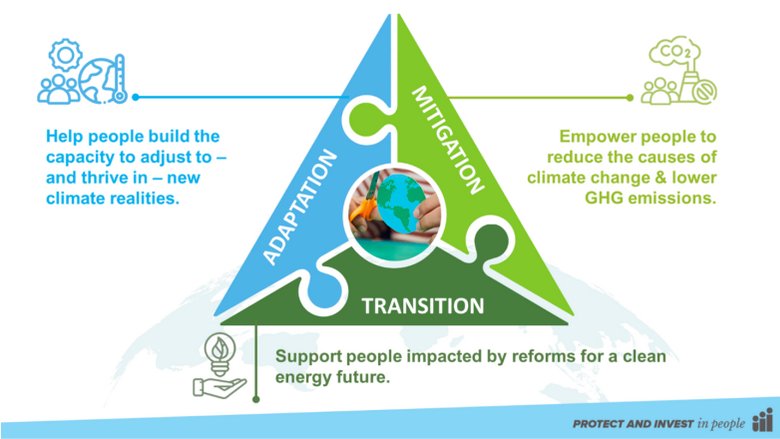The economic losses from climate change are enormous. In 2022 alone, recovery from natural disasters—many climate-driven—cost US$300 billion globally.
The human cost of climate change is harder to quantify but has broad and long-lasting impacts. Climate shocks interrupt schooling and health services, limit people’s ability to earn an income, and displace millions. Slow onset climate trends may not make headlines, but they are no less dangerous. Drought and desertification reduce crop yields, increasing malnutrition and pushing many families into poverty. The poverty cycle can be long-lasting as jobs are lost and children miss out on proper health and education.
Unfortunately, both across and within countries, the poorest and most vulnerable people are most exposed to climate risks. Health impacts, destruction of livelihoods, and increasing food prices due to climate change are likely to drive the largest increases in climate-induced poverty levels.
At the 2023 Spring Meetings of the World Bank Group and IMF, over 40 Ministers of Finance and Planning from Human Capital Project Network countries gathered to discuss investing in human capital for better climate outcomes. At a public event that followed, Human Capital Network Chairperson, Minister Oulimata Sarr from Senegal, was joined by Nobel laureate Esther Duflo, the Abdul Latif Jameel Professor of Poverty Alleviation and Development Economics at the Massachusetts Institute of Technology, Andrew Steer, President and CEO of the Bezos Earth Fund, and Axel van Trotsenburg, Senior Managing Director at the World Bank.
The discussions emphasized that, with proper investment, people do not have to be passive victims of climate change. Indeed, education is the greatest predicator of climate-friendly behavior.





